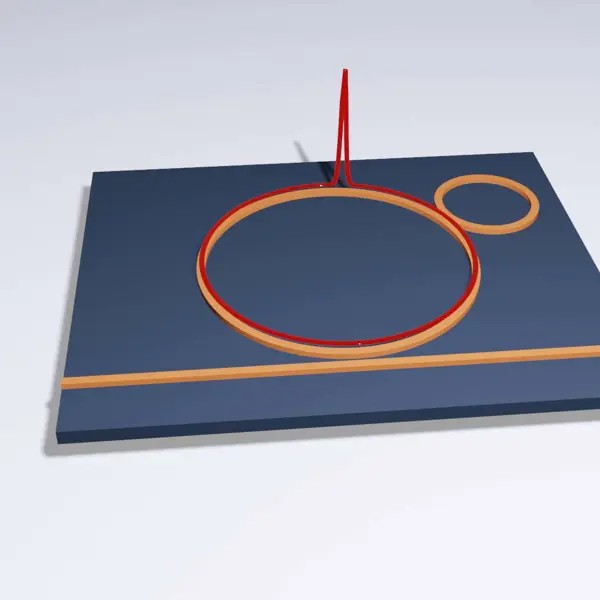


Our scientific core areas deal with developing chip-scale laser frequency comb technology, driving innovations in next-generation optical communications and ultrafast precision metrology.
Microresonator frequency combs (microcombs)
Since its realization in 2000, the optical frequency comb has revolutionized the field of optical metrology. To date, most optical frequency combs are based on the so-called mode-locked lasers. These are indeed great tools for many applications, but due to their size and complexity, these devices rarely see use outside of the laboratory. Just a few years ago, a novel type of frequency comb generator was discovered. It is based on a tiny photonic chip that is fabricated by leveraging existing micro and nanotechnology equipment formerly developed by the semiconductor industry. This has an enormous potential in terms of size, cost and reproducibility.
Our goal is to unveil the intricate mechanisms that govern the comb generation process in this novel platform and exploit this light source as a resource for the next generation of optical communication systems.
Nonlinear solicon photonics
Silicon photonics is an emerging research area that capitalizes on the investment realized by the semiconductor industry during the last decades. It leverages the existing technology to realize novel chips where the information is carried out by both photons and electrons. It has the potential to revolutionize the Information and Telecommunication industry, from optical interconnects to supercomputers, by providing cheaper, faster and more energetically efficient chips.
The silicon photonic chips are patterned with nanometre precision. This provides a fundamentally new scenario, where the light interacts with the matter in a strongly nonlinear manner. We focus on engineering devices by fostering this interaction with ultrashort laser pulses.
Broadband coherent communications
In modern wavelength division multiplexed (WDM) optical communications systems, individual optical carriers are modulated with advanced modulation formats. Information is encoded by leveraging the physical degrees of freedom of the light source (namely amplitude, phase and polarization) and, in the future, the space dimension in the transmission fiber. This scenario brings up tremendous challenges, since there is a need to synthesize and measure complex optical waveforms at ultrafast speeds.
We are developing frequency comb sources with a performance suited to meet these strong demands.
Research news

New method makes microcombs ten times more efficient
Microcombs can help us discover planets outside our solar system and track new diseases in our bodies. But current microcombs are inefficient and unable to reach their full potential. Now, researchers at Chalmers University of Technology in Sweden have scored a world first with their solution to make microcombs ten times more efficient. Their breakthrough opens the way to new discoveries in space and healthcare and paves the way for high-performance lasers in a range of other technologies.

Chip from Chalmers enables data transmission world record
An international group of researchers from Technical University of Denmark (DTU) and Chalmers University of Technology has set a world record by transmitting 1.8 petabits per second using only a single laser and a single optical chip. Victor Torres Company is head of the research group that has developed and manufactured the chip.

Combing light with sharper teeth
Microcombs have widely differing application areas – they can help us discover planets outside our solar system as well as track diseases in our bodies. New research results at Chalmers University of Technology, Sweden, now gives a deeper understanding of how the line width in the combs works, something that will, among other things, enable even more precise measurements in the future. And the discovery was made almost by coincidence.